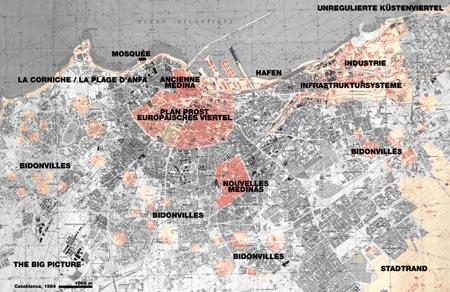Student works on Casablanca

Some of the research topics are given; others will have to be clarified in detail. The name Casablanca is surrounded by myths that not necessarily have to do with the actual reality. Today, Casablanca is a highly modern cosmopolitan metropolis, with only a small historical Medina. Casablanca has the world’s largest port for phosphates and it has the world’s biggestmosque with a 200 meters high minaret. The history of the French colonial architecture and urbanism, written by Jean-Louis Cohen and Monique Eleb, is fascinating and has in the nineteen fifties and sixties even influenced the international modern architecture. The image of the city is determined by modern and post-modern buildings. At the same time, there is a long tradition of informal settlements, some of which find themselves in the middle of the city.
Divided in small teams and in close co-operation with assistants, scientific collaborators and the professors themselves, the students will have to investigate a series of specific locales in Casablanca. The diverse samples will sketch the outlines, or fragments, of a masterplan for contemporary Casablanca as a particular condition of modernity, revealing its potential for urban transformation.
The topics are:
Lahraouiyine
Bidonvilles
Ancienne Médina
La Corniche
Zenata Beach
Border
Le Port
La ville européenne
Nouvelles Médinas

